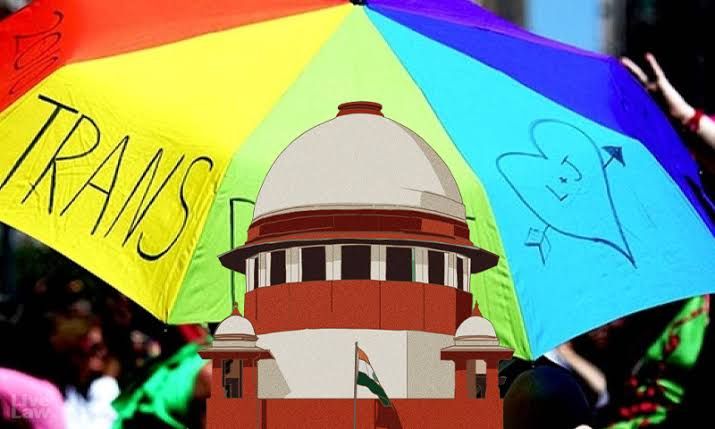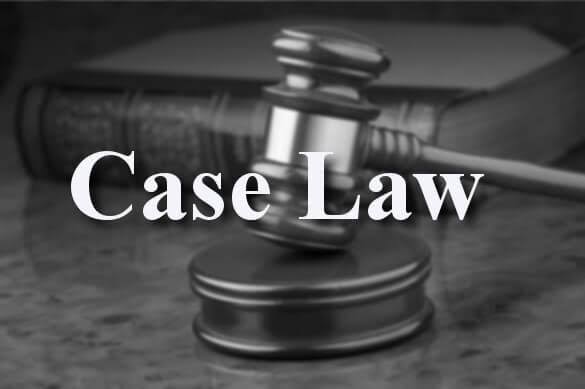Author- Drushti Jayesh Shah, Adv. Balasaheb Apte College of Law
To The Point
As law students, the first concepts we delve into are the fundamental rights granted by the Constitution of India to its citizens. Among these, one of the most crucial is the right to life and personal liberty i.e. Article 21 of the Constitution of India (COI). Over the years, Interpretation of Article 21 has evolved significantly within the legal framework. Everything that contributes to our ability to live peacefully falls under Article 21, thereby becoming our rights. Article 21 encompasses the right to health and medical care, the right to shelter, the right to a clean and healthy environment, the right to privacy, the right to travel abroad, etc.
So, why shouldn’t we also have the right to choose our partner? Partners and spouses hold a special place in each person’s life, and the freedom to select such a partner, regardless of caste, race, religion, gender, or sexuality, should be recognized as a fundamental right. This is precisely what the landmark case of Navtej Singh Johar vs. Union of India addresses. This case brought to light the vital rights of the LGBTQ+ community, which had been overlooked for far too long.
Abstract
This article analyses the landmark judgment delivered on June 10, 2018, which partially decriminalized Section 377 of the Indian Penal Code (IPC). This section previously criminalized “carnal intercourse against the order of nature” involving any man, woman, or animal. It was a broad provision that could be interpreted to encompass consensual sexual acts between individuals of the same sex, among other things.
Tragically, individuals like Avinshu Patel, Anjana Harish, Asha Thakar, and Bhavna Thakar took their own lives due to societal rejection of their identities and love. These are just a few cases, a lot more remain unreported. Even today, members of the LGBTQ+ community often feel it is easier to end their lives than to advocate for their rights against societal discrimination. The case of Navtej Singh Johar represents the ongoing struggle for rights of people of LGBTO+ community those who fight against discrimination in their daily lives.
Legal Jargon
Section 377 of Indian Penal code came into force a century and half ago. In 1861, when India was still under British raj, it was modelled on Britains ‘Buggery Act of 1533 and criminalised unnatural offences. According to section 377- whoever voluntarily has carnal intercourse against the order of nature with any man, women, or animal, shall be punished. Although the section did not explicitly specify gay sex or any other consensual intercourse involving those people who are not heterosexual. It was based on the idea that anything rather than normative heterosexual sex was an offence this also covered all forms of intercourse between homosexuals. Even though the attitude towards homosexuality in India have been different from western belief of it as immoral, section introduces during British raj in criminal code continued.
Movement Against section 377 was initiated by AIDS Bhedbhav Virodhi Andolan in 1991. Their historic publication “less then gay: A Citizen”-Report on status of homosexuality and spell out the problem with section 377. In the next decade, Naz foundation , an activists group filled a PIL in Delhi High Court in 2001 seeking legislation on homosexual intercourse between consenting Adults. In 2009 when the case come up again in Delhi High court after been rejected early on technical grounds, the High Court finally delivered the judgement which overturned the century and half year old section and thus legalizing consensual homosexual activities between adults. This was the first time when people fighting for LGBTQ community tasted victory. But their happiness does not last long, in 2013 the Supreme court on India quashed the High Court order and held that the order was legally unsustainable. “People mostly critize the on what they cant understand” lines said by Charles Dickens was clearly evident after the judgement of apex court.
“Love and Affection to someone is a Natural Phenomenon that exits in the minds and Brains of the people”. On one end, people in India, till look at Love & feelings as a Bond based on Religion and Gender but on other end, people were up from it, they believed love does not see anything. Finally, in 2016, five people filled a PIL in the Supreme court challenging the Constitutionality of the Section 377. The petition was filled by Navtej Singh Johar, Sunil Mehra, Ritu Dalmia, Keshev suri & Ayesha kapur together. So far this case was the first Instance wherein it was prayed infront of the court that the section 377 is against Constitution of India as it violates Right to Sexual privacy, Dignity, Right against discrimination & Freedom of Expression. The Supreme Court decided to Review the petition and criminalization of Homosexual activity. In the middle of all this in 2017 there came the Judgement of Supreme Court in case of Justice K.S. Puttaswamy V. UOI where the court unanimously ruled that right to individual privacy is an fundamental right in COI. The Judgment Also Mentioned That Right To Privacy And Right To Sexual Orientation Lies At The Core Of The Fundamental Rights Guaranteed By Article 14,15 And 21 Of the Constitution. This Judgement gave hope to LGBTQ community that the court would soon strike down the section 377 as according to them the section was violative of articles mentioned by the court in the said judgement. It was in 2018 when the hearing of the petition stated before the five judge bench. It was urged to the Court that the Section 377 is unconstitutional and should be curbed down as it is violative of Article 14 (Equality Before Law), Article 15 (Prohibition of Discrimination on grounds of Religion, Race, Caste, Sex or Place Of Birth),
Article 21 (Right To Life) of the Indian Constitution. On 8 sep 2018 finally the long waited verdict came were supreme court reserved its verdict of 2013 of restoring section 377. The court stated that section 377 which criminalizes homosexuality is now unconstitutional and hence void. The Court also unanimously declared that the portions of the law relating to consensual sex between the Adults is Unconstitutional. However, the other remaining portions of the section 377 relation to sex with minors, non-consensual sex between adults and bestiality still remains in force. This judgement changed the history. Justice Indu Malhotra Said: History owes an apology to these people and their families. Homosexuality is the part of human sexuality. They have the right of dignity and free of discrimination.
Case Laws
National Legal Services Authority V. UOI -2014
In a groundbreaking decision, the Supreme Court of India acknowledged transgender individuals as the “third gender” and upheld their fundamental rights as enshrined in the Constitution. The Court determined that gender identity is a crucial aspect of the right to live with dignity under Article 21, stating that discrimination based on gender identity infringes upon Articles 14, 15, and 19. The ruling underscored that individuals have the right to self-identify as male, female, or third gender, and this identity must be honored without requiring medical or surgical interventions. The Court instructed the government to ensure legal recognition, social welfare benefits, and equal opportunities for transgender individuals, marking a significant milestone towards inclusivity and equality.
Naz Foundation v. Government of NCT of Delhi
The Delhi High Court delivered a historic judgment by reading down Section 377 of the Indian Penal Code, which criminalized consensual homosexual acts between adults. The Court held that Section 377, insofar as it applied to consenting adults in private, violated fundamental rights guaranteed under Articles 14 (equality before law), 15 (non-discrimination), and 21 (right to life and personal liberty) of the Constitution. The judgment marked a significant step towards recognizing the rights and dignity of the LGBTQ+ community in India. However, this ruling was later overturned by the Supreme Court in Suresh Kumar Koushal v. Naz Foundation (2013), before being ultimately upheld and expanded in Navtej Singh Johar v. Union of India (2018).
Conclusion
The Navtej Singh Johar v. Union of India judgment stands as a monumental affirmation of human dignity, equality, and constitutional morality. By decriminalizing consensual same-sex relations, the Supreme Court not only struck down a colonial-era law that perpetuated discrimination but also gave voice to the long-silenced struggles of the LGBTQ+ community in India. This ruling reaffirmed that fundamental rights are for all, regardless of one’s gender identity or sexual orientation. It also reflected the evolving understanding of individual liberty, privacy, and the right to love—core values enshrined in the Constitution. While the judgment marked a legal victory, it also served as a reminder that social acceptance and equal treatment must follow legal recognition. The case is not just about legal reform but about restoring faith in the idea of inclusive justice and ensuring that every individual can live with freedom, dignity, and pride.
FAQs
What is Buggery Act?
This Act was passed during the reign of king henry VIII which made sodomy (anal sex) illegal.
What is Article 14 and 15 of COI?
Article 14 of the Constitution of India guarantees equality before the law and equal protection of the laws to all persons within the territory of India. And Article 15 prohibits the State from discriminating against any citizen on grounds of: Religion, race, caste, sex, or place of birth.
What is LGBTQ+ Community?
The LGBTQ+ community is a collective term that refers to individuals whose sexual orientation, gender identity, or gender expression differs from the traditional norms of heterosexuality and cisgender identity.
What is PIL?
Public Interest Litigation (PIL) is a legal mechanism in India that allows any individual or group to file a petition in court for the protection of the public interest, especially for the rights of those who may not be able to approach the court themselves.




